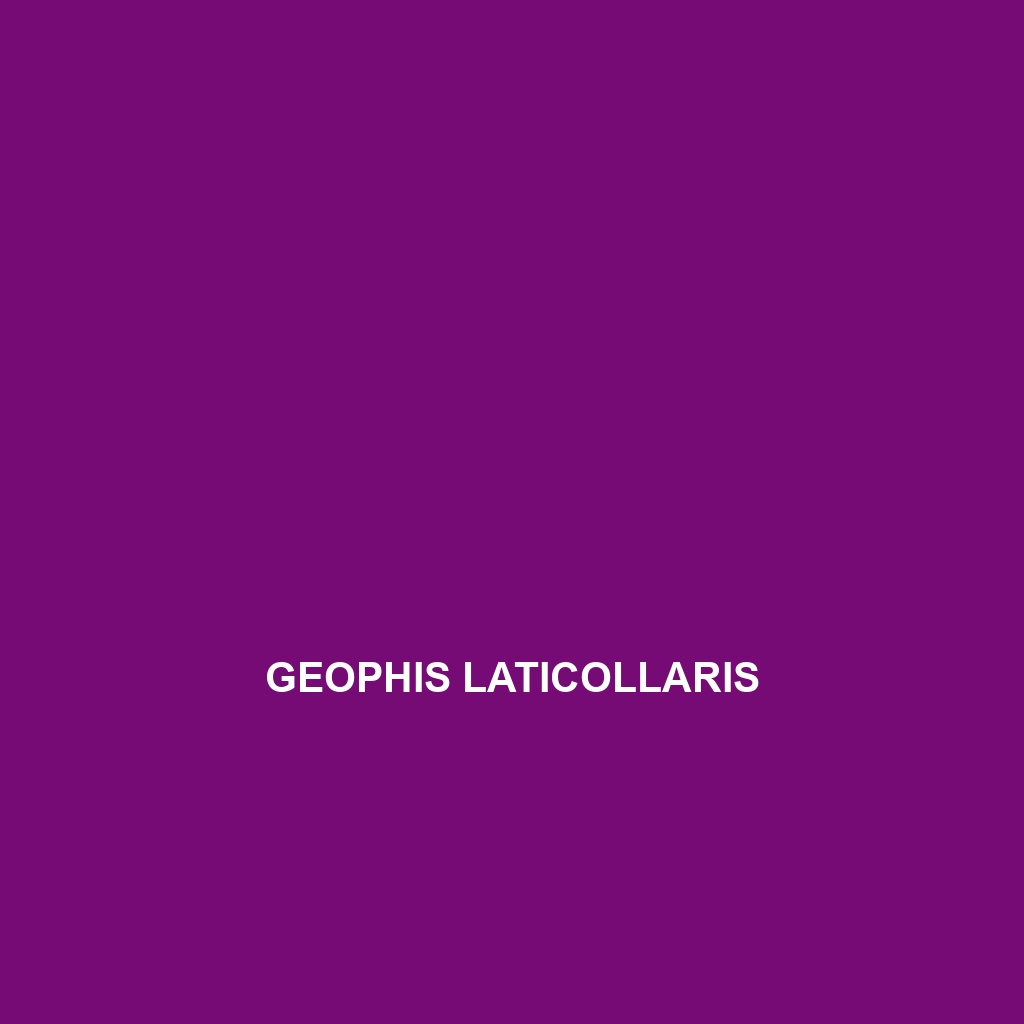Common Name
Geophis laticollaris
Scientific Name
Geophis laticollaris
Habitat
Geophis laticollaris, commonly known as the wide-collared earth snake, is primarily found in the lush habitats of Central America. This species thrives in tropical rainforests, where the humid climate provides a rich biodiversity and a complex ecosystem. They are often located in lowland moist areas, including regions close to rivers and streams, and can also adapt to subtropical environments. In addition to rainforests, Geophis laticollaris is sometimes found in adjacent savannas that offer diverse underbrush, where they can hide from predators. The moisture-laden air and soil in these habitats are crucial for the survival of this species, making them sensitive to environmental changes.
Physical Characteristics
Geophis laticollaris exhibits characteristic physical features that make it distinguishable from other species. Adults typically measure between 35 to 70 cm (14 to 27 inches) in length, with females being larger than males. Their body is cylindrical and relatively slender, a feature that aids them in burrowing seamlessly into the ground. The coloration of the snake is another striking characteristic; it usually has a dark brown or black dorsal surface contrasted with a lighter ventral side, which can range from light tan to pale yellow. This coloration provides effective camouflage within their earthy habitats. Notably, they have a broad collar-like marking behind their heads, which contributes to their common name, and helps in deterring predators.
Behavior
The behavioral patterns of Geophis laticollaris are fascinating and adaptable to their environmental conditions. These snakes are primarily nocturnal, becoming active during the cooler night hours, which reduces their risk of predation and helps them in thermoregulation. During the day, they often retreat into burrows or hide beneath leaf litter. Socially, they are mostly solitary but have been observed engaging in unique mating rituals during the breeding season, which typically occurs in the late wet season. Their mating dances can involve displays of intricate movements, showcasing their agility.
Diet
Geophis laticollaris is classified as a carnivore, with a diet primarily consisting of small invertebrates, such as earthworms and insects. This species plays an essential role in maintaining the ecosystem by controlling the populations of these creatures. They are known to exhibit a unique feeding technique, utilizing their keen sense of smell to locate prey in the soil and leaf litter. While their primary food source is insects, they may also consume smaller reptiles or amphibians when available, ensuring a varied diet that supports their nutritional needs.
Reproduction
The reproductive cycle of Geophis laticollaris is an essential aspect of its life history. Mating typically takes place during the rainy season, with females laying clutches of eggs in hidden nests made from soil and leaf litter. The gestation period lasts approximately 60 to 80 days, after which the young emerge fully formed. Offspring typically range from 5 to 12 eggs per clutch, and once hatched, they are independent and begin foraging for food shortly after. Parental care is absent in this species, as the mother does not tend to the young post-hatching.
Conservation Status
Currently, Geophis laticollaris has been classified as of ‘Least Concern’ by the IUCN Red List. However, ongoing habitat destruction and climate change pose significant threats to its populations. Conservation efforts are crucial in preserving the tropical ecosystems where this species resides. Protection of their natural habitats and implementing awareness programs about their ecological importance are essential steps in ensuring the long-term survival of the wide-collared earth snake.
Interesting Facts
One of the most intriguing aspects of Geophis laticollaris is its ability to adapt to diverse environmental conditions while relying on its camouflage for protection. This snake can also produce a mild toxin in its saliva, which aids in subduing prey, although it is not harmful to humans. Additionally, these snakes exhibit a fascinating approach to navigation; they use their highly developed olfactory senses to explore their surroundings, making them exceptional foragers in dense underbrush environments.
Role in Ecosystem
Geophis laticollaris plays a critical role in its ecosystem as both a predator and prey. By consuming a large number of insects and invertebrates, these snakes help regulate the population of these species, contributing to the ecological balance. Furthermore, they serve as prey for various larger mammals and birds, forming an integral part of the food web. Their presence indicates a healthy environment, making them valuable indicators of ecosystem health.
